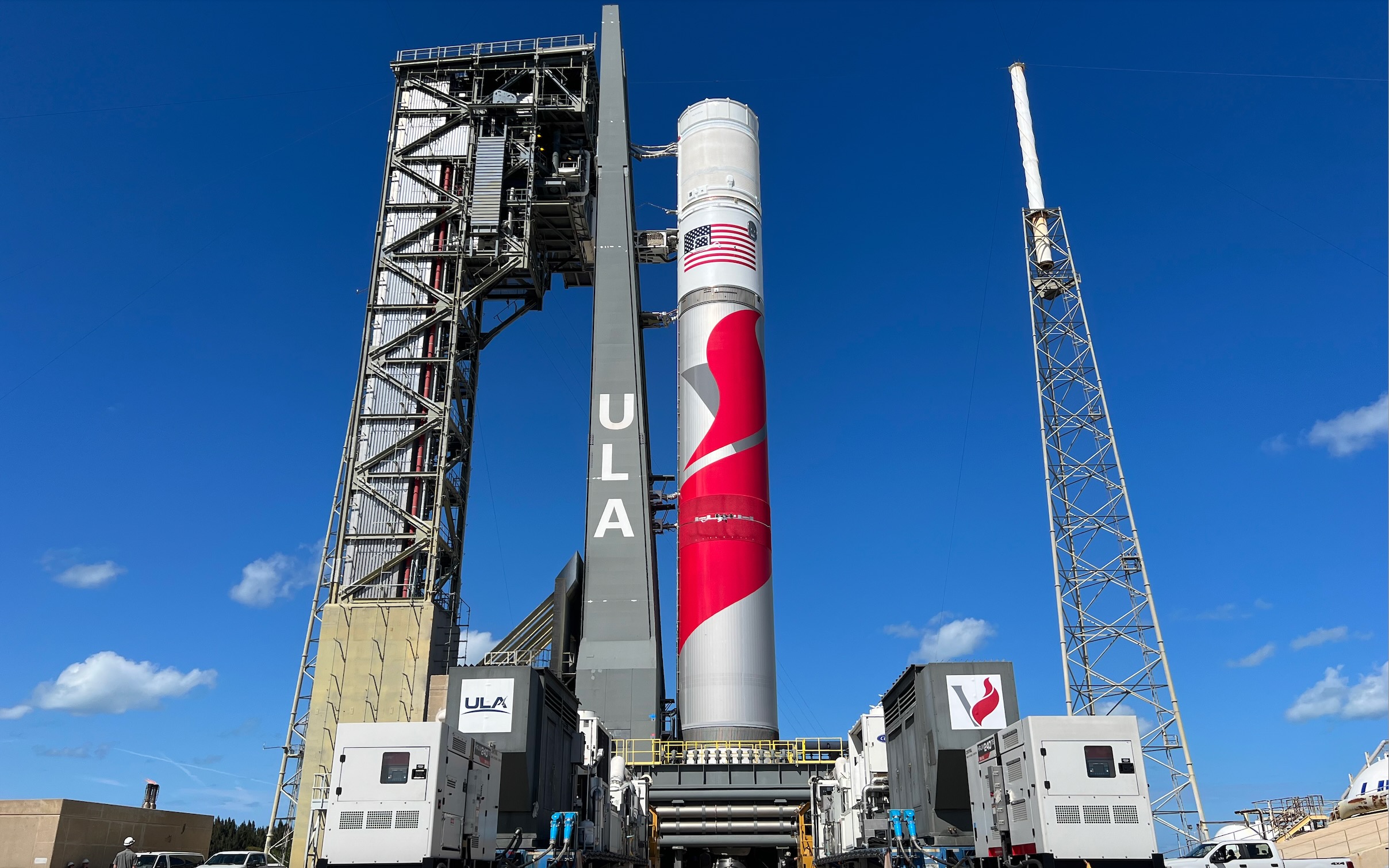ULA's Vulcan rocket launch debut delayed by fireball during testing
An anomaly during testing of Centaur upper stage has grounded the new rocket for a spell.

United Launch Alliance's plans for the first launch of its new Vulcan rocket have been complicated by a violent explosion during testing of the rocket's upper stage.
ULA was targeting May 4 for the first launch of the Vulcan vehicle from Cape Canaveral Space Force Station in Florida, with the rocket arriving at the site in late January.
However, on March 29, a Centaur upper stage suffered an anomaly and exploded during testing at NASA's Marshall Space Flight Center in Alabama. The incident was first reported by Ars Technica.
Related: United Launch Alliance's 1st Vulcan Centaur rocket arrives in Florida for debut flight
Outside of the test rig/ stand. Test article is inside (you can't see it). Hydrogen leak. H2 accumulated inside the rig. Found an ignition source. Burned fast. Over pressure caved in our forward dome and damaged the rig. pic.twitter.com/0d0KpI1ggjApril 13, 2023
ULA CEO Tory Bruno later shared footage of the incident on Twitter, revealing that the blast followed a hydrogen leak that then dramatically ignited.
The upper stage that exploded was not part of the hardware for the first launch, but the investigation needs to be completed before Vulcan is clear to fly.
Bruno has since stated that the first Vulcan flight is likely going to be delayed into June or July, adding to years of delays to the program, including delayed delivery of engines built by Blue Origin, Jeff Bezos' aerospace company.
Breaking space news, the latest updates on rocket launches, skywatching events and more!
The U.S. Space Force launch program office is currently monitoring the situation for potential long-term impacts on the national security launch program, SpaceNews reported last week.
The Vulcan Centaur stands 202 feet (62 meters) tall and is capable of lifting 7.7 tons (7 metric tons) to geostationary orbit. It is designed to replace ULA's workhorse Atlas V and Delta IV launch vehicles
Vulcan is powered by a pair of Blue Origin-built BE-4 methane-liquid oxygen propellant engines in its first stage and up to six solid rocket boosters.
The rocket has plenty of action ahead, despite its setbacks. NASA will add Vulcan to its catalog of launchers for future missions, while Amazon has contracted ULA for 38 Vulcan launches to support the deployment for its Project Kuiper communications constellation.
Follow us on Twitter @Spacedotcom or Facebook.

Andrew is a freelance space journalist with a focus on reporting on China's rapidly growing space sector. He began writing for Space.com in 2019 and writes for SpaceNews, IEEE Spectrum, National Geographic, Sky & Telescope, New Scientist and others. Andrew first caught the space bug when, as a youngster, he saw Voyager images of other worlds in our solar system for the first time. Away from space, Andrew enjoys trail running in the forests of Finland. You can follow him on Twitter @AJ_FI.

